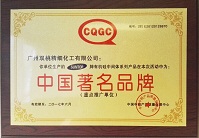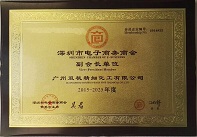
![]() E-mail: admin@gz-chemical.com
E-mail: admin@gz-chemical.com
Email us,best price and silane solutions for you!
Tel:+86 (20) 29035969

![]() E-mail: admin@gz-chemical.com
E-mail: admin@gz-chemical.com
Email us,best price and silane solutions for you!
Tel:+86 (20) 29035969


One of the main challenges of second-generation biofuel production is identifying enzymes
produced by microorganisms for use in a cocktail of enzymes to catalyze biomass hydrolysis
in which the enzymes act together to break down the carbohydrates in sugarcane trash and
bagasse, for example, and convert them into simple sugars for fermentation.
A group of researchers at the University of Campinas (UNICAMP), working in partnership with
colleagues at the Brazilian Biorenewables National Laboratory (LNBR) in Campinas, S?o
Paulo State, Brazil, have discovered that Trichoderma harzianum, a fungus found in the
Amazon, produces an enzyme with the potential to play a key role in enzyme cocktails.
The enzyme, which is called β-glucosidase and belongs to glycoside hydrolase family 1 (GH1),
acts in the last stage of biomass degradation to produce free glucose for fermentation and
conversion into ethanol. In the laboratory, however, the researchers observed that high levels
of glucose inhibited the activity of β-glucosidase.
"We also found that the enzyme's optimal catalytic activity occurred at 40 °C. This represented
another obstacle to use of the enzyme because in an industrial setting, the enzymatic
hydrolysis of biomass is performed at higher temperatures, typically around 50 °C," said
Clelton Aparecido dos Santos, a postdoctoral researcher at UNICAMP's Center for Molecular
Biology and Genetic Engineering (CBMEG) with a scholarship from FAPESP.
Based on an analysis of the enzyme's structure combined with genomics and molecular
biology techniques, the researchers were able to modify the structure to solve these problems
and considerably enhance its biomass degradation efficiency.
The study resulted from a project with a regular research grant from FAPESP and a Thematic
Project also supported by FAPESP. The findings are published in the journal Scientific Reports.
"The modified protein we developed proved far more efficient than the unmodified enzyme and
can be used to supplement the enzyme cocktails sold today to break down biomass and
produce second-generation biofuels," Santos told.
To arrive at the modified protein, the researchers initially compared the crystal structure of the
original molecule with structures of other wild-type β-glucosidases in the GH1 and GH3
glycoside hydrolase families. The results of the analysis showed that glucose-tolerant GH1
glucosidases had a deeper and narrower substrate channel than other β-glucosidases and that
this channel restricted glucose access to the enzyme's active site.
Guangzhou Double Peach Fine Chemical Co.,Ltd
Address: No 3401 Huangpu East Road, Huangpu District, Guangzhou, China
Tel:+86 (20) 29035969 Fax:+86(20)29035979
Tel/Wechat/Whatsapp:0086 13826126978 admin@gz-chemical.com